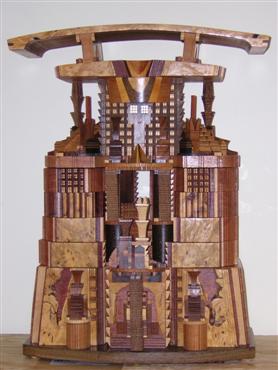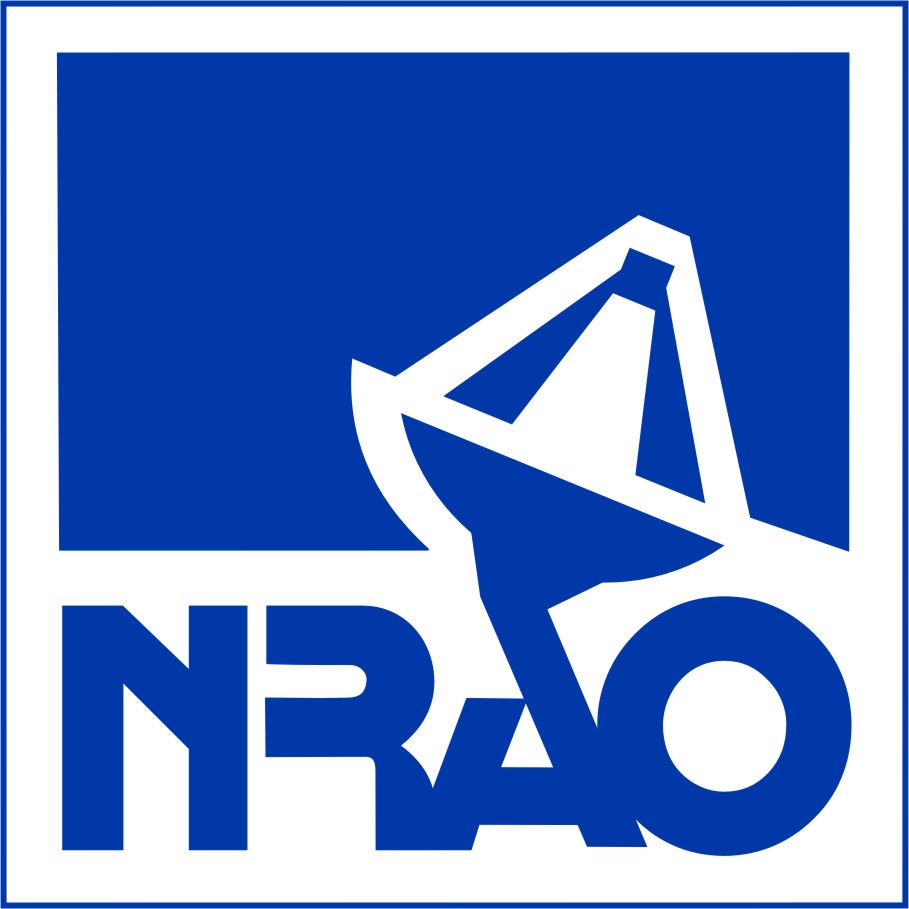If RFI is what happens when spectrum management fails, spectrum management is still quite successful. The articles below introduce the processes of spectrum management. The two at top discuss the workings of US and international regulatory bodies. The concluding article discusses the agencies by which radio astronomy copes with and responds to the regulatory environment. The sidebar (highlighted in garish green) pokes fun at some of the game's wackier elements.

Radio Frequency Interference (RFI)
The NRAO engages in a wide variety of RFI mitigation-related program activities. Links at the top of this page will provide technical information to telescope users and those who need to operate within the National Radio Quiet Zone. If you have questions about the RFI environment around our telescopes, use the links and contact info provided at the top of this page.
If your interests are more general, or for the merely curious, the links at top left ("Primers & Guides") provide basic information on what radio astronomers do all day and why they are so concerned with the quality of the spectrum.
NRAO's Committment
The staff effort in Green Bank is composed of a diverse Interference Protection Group chaired by Toney Minter and supported by Carla Beaudet doing RFI testing and Sheldon Wasik in the role of the NRQZ administrator. In New Mexico Dave Schafer is responsible for the VLBA and the Jansky VLA. Harvey Liszt in Charlotesville is NRAO's Spectrum Manager and the Chair of IUCAF, as well as a member of the AAS Committee on Light Pollution, RFI and Site Protection and IAU Commission C.B7 (see below). Darrel Emerson (TUC-emeritus) is a CORF consultant and past member of CORF of very long standing, also former IUCAF chair and former NRAO spectrum manager. Jon Romney (AOC) is a past IUCAF member via COSPAR. Dave Finley (AOC) prepared the RFI and radio astronomy primers linked at upper left. In past years, Bill Brundage and Mark McKinnon (AOC) participated heavily. Rick Fisher (CV-Emeritus) is an expert on the RF environment and an advisor to SKA on matters of interference excision. A. R. (Dick) Thompson (CV-Emeritus), who chaired US WP7D for 20 years, serves as adviser and spiritual guide.
NSF and the Electromagnetic Spectrum
Our funding agency, the National Science Foundation, vigorously supports spectrum management and protection of radio astronomy. NSF's Electromagnetic Spectrum Management Program within the Division of Astronomical Sciences is directed by Mangala Sharma . She is the Chair of US WP7D (see related story below) and sits on the Interdepartment Radio Advisory Committee (IRAC), the US government's broad spectrum planning body. Tom Wilson is vice-chair of US WP7D and NSF's representative to the IRAC Spectrum Planning and Frequency Assignment Subcommittees. Glen Langston is their emergency backup. NSF and NASA jointly provide financial backing for CORF (see story below).
How Spectrum Management Really Works
| FCC: Issues and Filings The vanguard of the ongoing process to shape the use of the electromagnetic spectrum is just up the road in Washington, DC. The FCC administers the spectrum for commercial uses, and is largely responsible for setting national policy on spectrum issues. FCC also plays a large role in organizing the US national delegation to the ITU (see related story). It is to the FCC that astronomers must generally respond on issues affecting the health of their discipline. The NTIA, FCC's counterpart for governmental and shared use of spectrum is found within the Dept. of Commerce and has a somewhat lower profile. The FCC typically opens a docket to contain the life cycle of a matter, beginning with a notice of inquiry (NOI), a notice of proposed rule making (NPRM) and, finally, a report and order containing the actual and final rules. The NOI and NPRM are typically followed by 30-75 day periods of open and reply comment and then by latent periods of further deliberation; the process may last several years. Issues on which the FCC now seeks comment include such varied topics as: redefining the meaning of RFI and use of cognitive and software-defined radio (field-configuarable, emf-sensing transmitters) to increase output levels in rural areas. Of critical importance to radio astronomy are issues like broadband connections over power lines (BPL; ET Docket 03-104) and use of ultra-wideband (UWB; ET Docket 98-153) signal modulation (sub-ns, frequency-hopping pulses) with unlicensed devices. If you think this stuff doesn't matter, do an internet search on 'bpl banned". Among recently-done deals, the 1720 MHz OH line now finds itself squarely within a band allocated to PCS and adaptive auto cruise controls may use 76 GHz uwb radar to promote collision avoidance. Still think it doesn't matter? When not worrying about SuperBowl half-time shows, the range of issues addressed by the FCC is often rather breathtaking, even within the scope of a single NOI or NPRM. Yet it is incumbent on all affected spectrum users to engage with and respond to the FCC. To get a feeling for the responses of radio astronomy, open the FCC's comment search tool and seek out your favorite institution of higher learning. |
ITU and the rest of the regulatory world US spectrum regulations in most ways harmonize with and in other ways diverge from practices in the rest of the world. US policies are agressive and tend to force new technologies, but any blanket characterization is necessarily inadequate. Local variations are the norm; if the US system seems complex, here's a glimpse of how things work in Europe. A variety of influences tend to encourage cooperation and reinforce convergence in the final rules. ITU-R, the radio bureau of the International Telecommunicatons Union (a UN agency in Geneva) sets radio telecommuncations policy world-wide. Every 3-4 years, a World Radio Conference (WRC) crafts new treaty language to which member states subsequently adhere by national adoption (with some leeway). Each WRC also drafts the issues and agenda for its successor, as a reaction to the evolving nature of radio technology and spectrum use. For instance, the ITU-R considers the radio spectrum to extend up to 3000 GHz and makes allocations up to 275 GHz. But it is considering extending its domain to higher frequency and regulating above 275 GHz. . Radio astronomy is one of the so-called "passive services" like earth sensing. Its interests are nominally represented at the ITU-R in Working Party 7D (which means the D-th working party of Study Group 7). In practice, WP7D meetings are heavily attended by non-radio astronomers whose interests are not exactly aligned with ours. Among current issues on the table at WP7D is a draft new question (destined, with luck, for WRC10) concerning recognition of radio quiet zones The author of this pdnq is none other than the NRAO spectrum manager. WRC's are huge gatherings (2000 delegates) attended by a dozen or so radio astronomers. The organization of the ITU-R is mirrored nationally in working parties and study groups which meet locally before heading to Geneva once or twice a year. USWP7D meets monthly in telecons hosted by Dr. Tomas Gergely and nterested parties should contact Tom for more information. The USWP7D contact list has 100 or so names, of whom typically 15 or so attend and a handful actually go to Geneva with Tom and Andy Clegg to do the work. |
| The agencies of radio astronomy Individuals are free to offer comments to the FCC but have no standing with the ITU. For such reasons, and to marshal their resources, astronomers and other passive users have created various standing committees to represent their concerns. The Committee on Radio Frequencies (CORF) of the US National Academy of Sciences, funded by NSF and NASA, files comments with the FCC and does policy studies on important issues. Its members represent astronomy and other passive services like earth sensing. The CORF website has useful links and information. IUCAF, an ICSU-sponsored group with members appointed by IAU, URSI & COSPAR, has independent standing at the ITU and represents radio astronomy very effectively in the largest arena. It meets twice each year with WP7D in Geneva. IUCAF sponsors Summer Schools in spectrum management, last held in Mitaka, Japan in 2010 and Santiago, Chile in 2014 (see links at upper left). CRAF, the Committee on Radio Astronomy Frequencies of the European Science Foundation, was partly modelled after CORF but it employs a permanent, full-time advocate and spectrum manager, Laurentiu Alexe, in addition to having a rotating chair (currently Roberto Ambrosini). The recently-retired, long-time CRAF spectrum manager Titus Spoelstra, was very effective at the ITU while speaking on behalf of the Netherlands and CEPT. In the Asia-Pacific region, an analogous role to CORF is played by RAFCAP. The IAU co-sponsors IUCAF but also operates its own C.B7 Inter-Division B-C Commission Protection of Existing and Potential Observatory Sites which considers some of the same material. URSI operates Commission J.
|
The ongoing debate over the regulatory climate has its wilder side. For instance, consider these quotes from a recent document offered by a Washington, DC NGO ... "A hundred years of subsequent physics experiments confirms that our universe contains no such thing as solid matter or definite cause and effect." "Most of the topics spectrum policy concentrates on, such as ''interference' and 'spectrum' are value judgements ... . Radio waves do not bounce off one another or cancel each other out." "Interference is a consequence of system design, rather than an inherent property of the radio spectrum. Interference is also inherently a legal concept." "A large block of high frequency spectrum (above 50 GHz) that is currently unassigned could be designated as an open space for completely unlicensed activity." Here is the Frequency Allocation Table. Boys and girls, can YOU figure out which spectrum they're talking about? On the lighter side Astronomy and the other so-called "passive services" are tired of being pushed around! We need some attitude! NRAO proposes a change of classification of the Radio Astronomy Service from "passive" to "passive-aggressive". |
